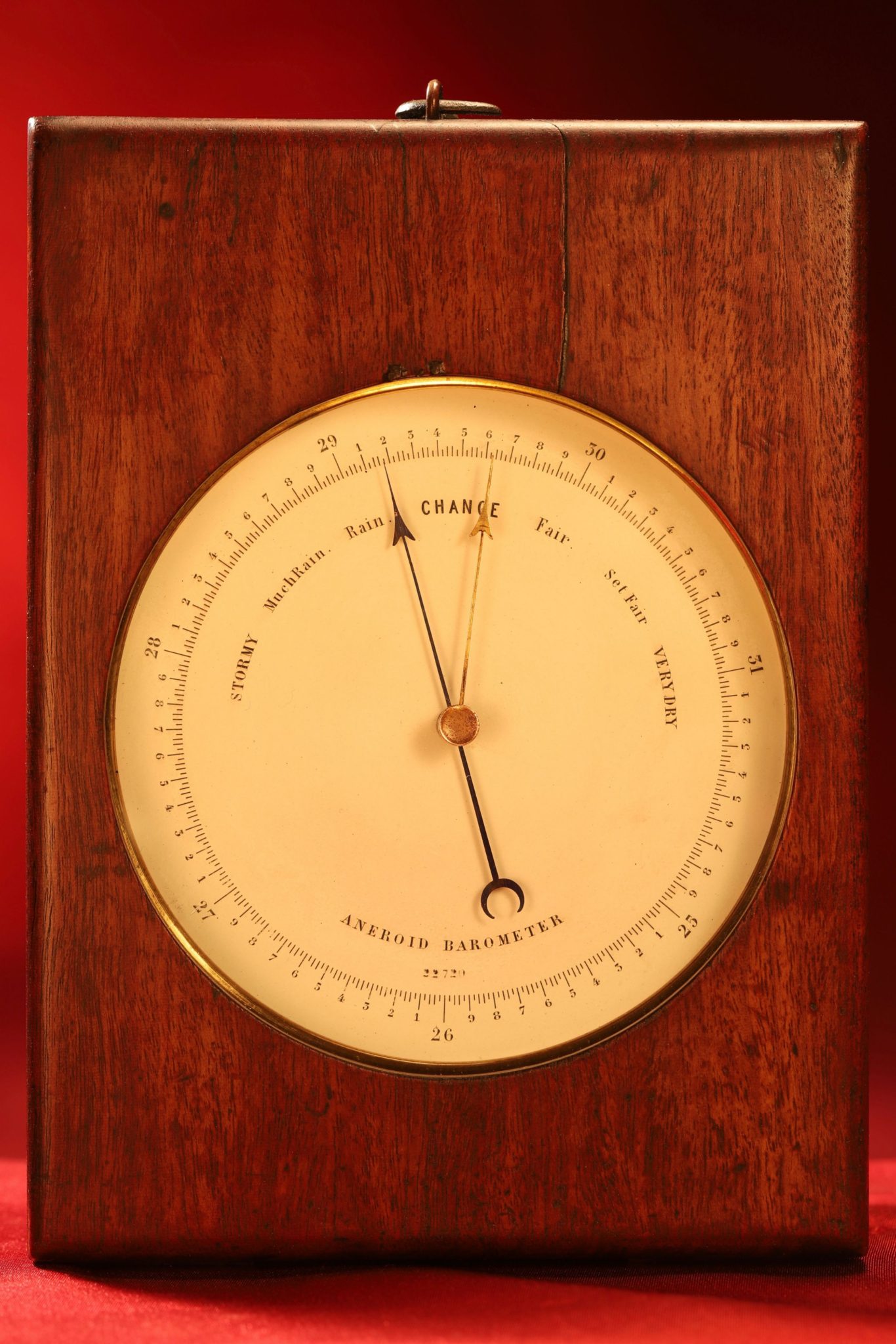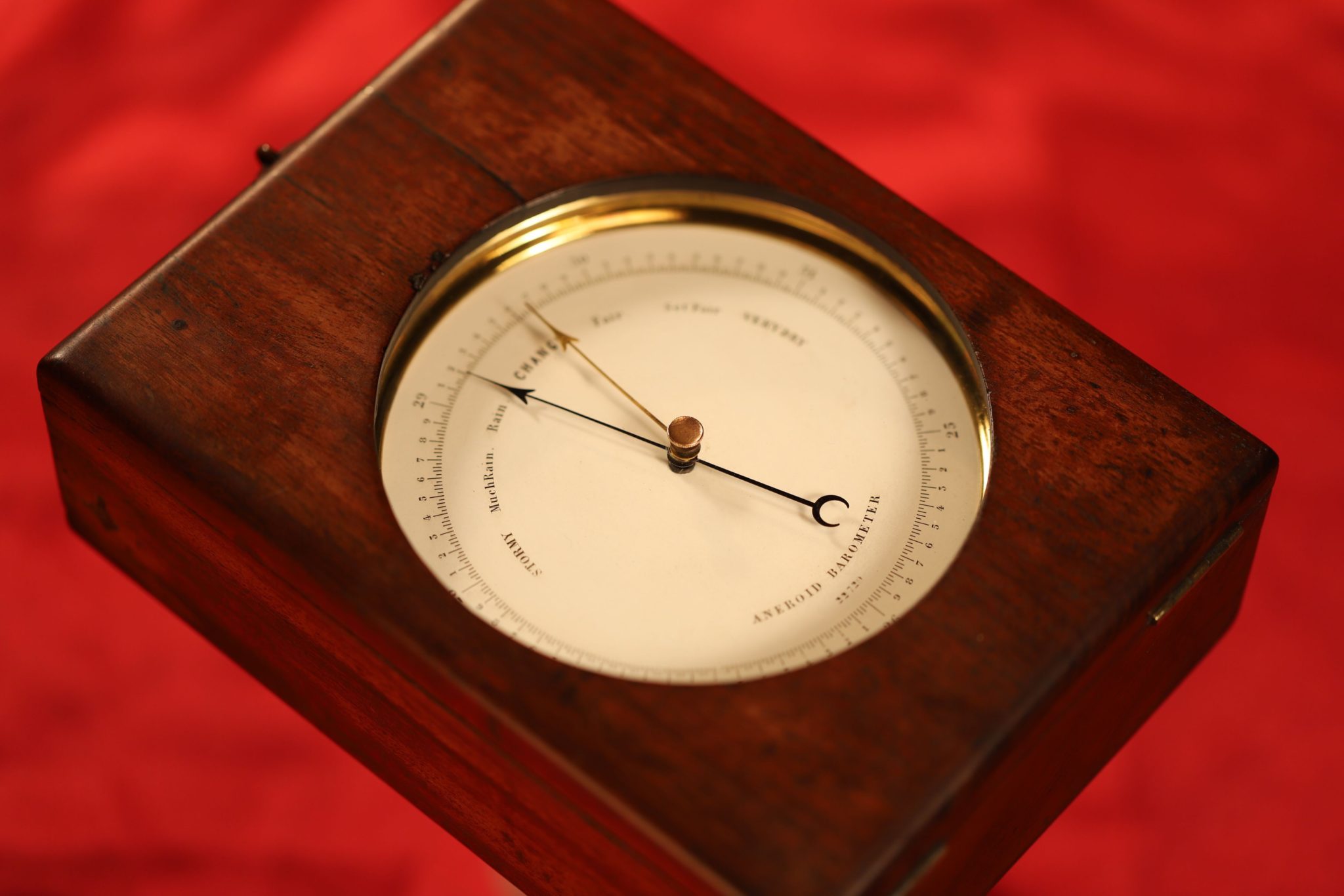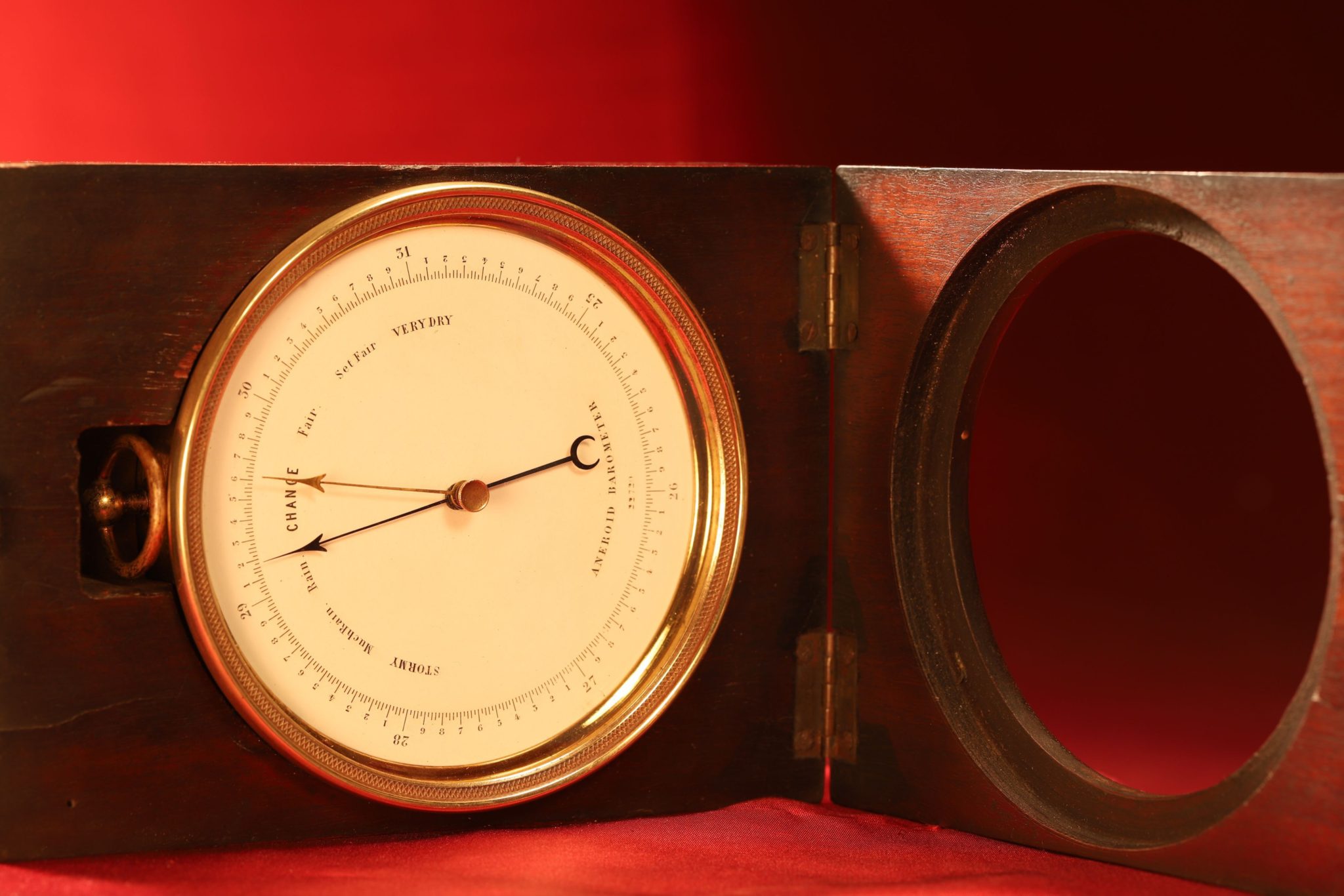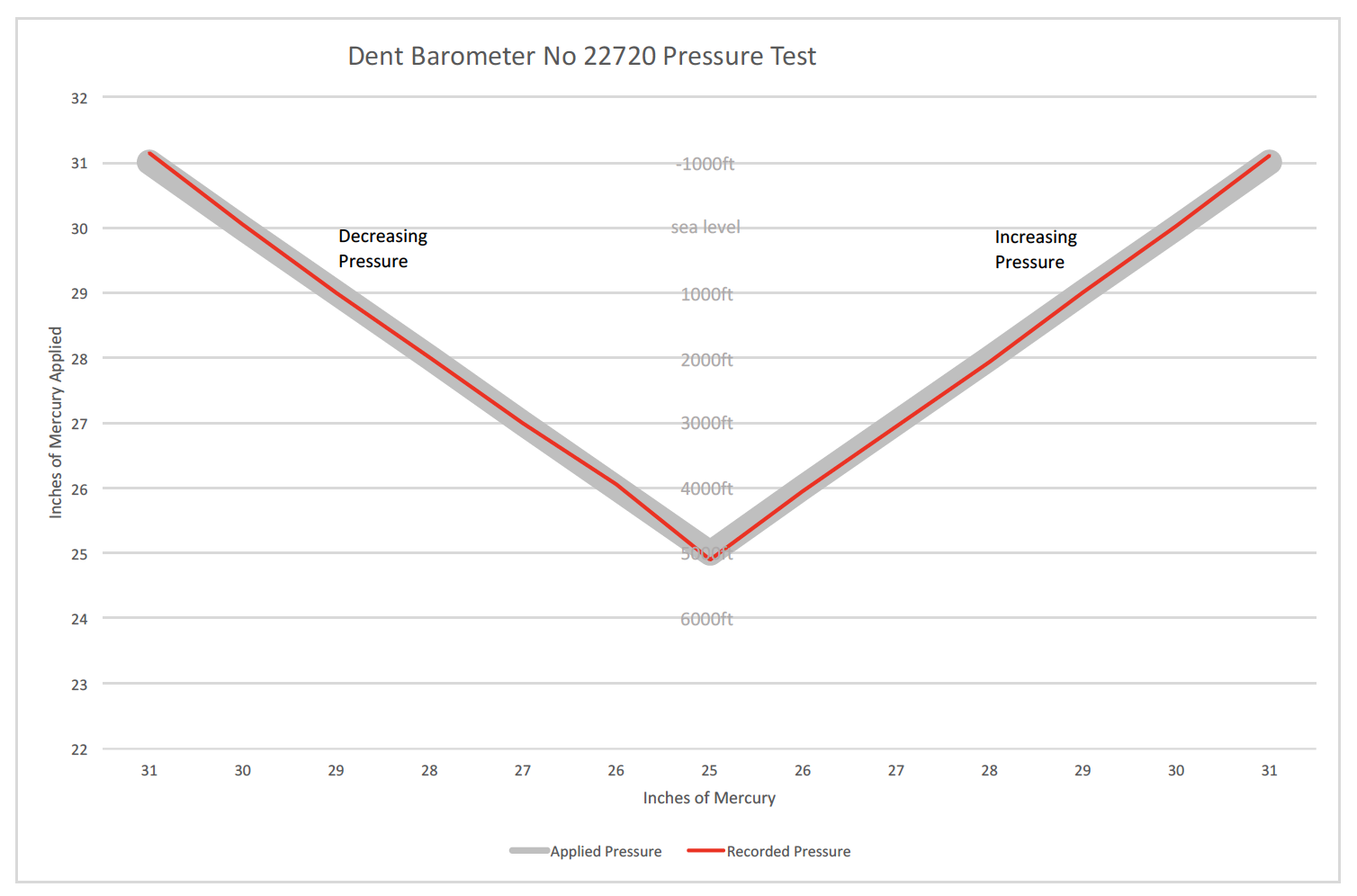An extremely rare early chart table mahogany cased desk barometer No 22720 by Vidi with innovative transitional ‘bielle oblique’ movement c1860
Chart table aneroid barometer having 4½” printed china clay card over zinc dial, the upper part with standard meteorological terms, the lower marked “Aneroid Barometer” with serial no. “22720,” the barometric scale calibrated in inches of mercury with a range from 25” to 31” and divided down to 1/100th”. Fine blued steel pointer, gilt brass index with setting knob, flat glass set within a typical Vidi pattern herringbone pattern bezel. The movement driven from a single 3” nickel alloy capsule tensioned on a C spring, and comprising rod and cone primary transmission acting on a vertically arranged swinging shaft, parallel micro adjustable gain to secondary lever, fine chain termination to position adjustable pulley located to lower arbor. Split bar braced C spring with forward extension to static mass. All raised over a substantial cast steel chassis and enclosed within a drum form spun high copper brass case, extension post and suspension ring, calibration port to verso.
The whole contained within a flat mahogany deck case with hook and eye fastening.
Condition: The subject of a full service, conservation, and calibration under laboratory conditions. The movement exceptional with an error of <.05” and only at lowest pressure (25”) , very smooth transition.
Presented in original condition in all respects, the dial clean and clear, the glass undamaged, the brass case with much original finish though substantially marked and oxidised in areas entirely consistent with having been associated with the mahogany case. The mahogany deck case essentially sound save a small split to the lower side of the viewing port. General wear and losses, some fading though on the whole very presentable.
Comments: This is a very innovative and relatively complex design seeking to address many of the known short comings of the original Vidi patent. The static mass is designed to help overcome static friction – essentially it relies on external vibrations, either those transmitted through the air or within solid surfaces, causing those components with lighter mass to resonate at a higher amplitude than the static mass. It is this difference in amplitude which will release the static friction in those components transmitting the signal to the pointer.
The reduction in static friction is further addressed in the rod and cone signal transmission – rather than the pinned joint of all preceding instruments with its inherent friction, the signal is transmitted through a pin finely ground to a point and seated within a cone, the point resting within the cone apex. This is a vastly superior arrangement almost entirely eliminating friction.
The various adjustments for gain are also of interest and, though they in themselves, do not create greater accuracy in the basic instrument, they allow the instrument to more accurately resolve given values and would not be included in an instrument with inherently greater inaccuracy.
In all, a study in the thinking, design and engineering of the aneroid, and certainly one of the, if not the, most important designs to emanate from the 19th century.
The mahogany case, though very basic in design, is almost certainly a shipwrights’ piece, carved from a solid piece of mahogany. It is exceptional and, in my experience, unique, and certainly not a production piece. Clear evidence in the bottom of the base shows that it was attached to a flat surface with three screws, and at some time removed with force, the screw heads being torn through the bottom, possibly because they had corroded. Deposits of old paint on the bottom indicate that it had been painted round. The hinges, marked “Patent No 2,” steel hinge pins and screws all early features consistent with the age of the instrument.
The evidence suggests this is one of the earliest aneroid instruments taken to sea, the mahogany case one of the first patterns of its type. A very high quality, and what would then have been an expensive, instrument. The rarity of these pieces probably explained by the additional expense in manufacture and in practical terms the somewhat marginal advantage of this design over the more standard arrangement. In the end, absolutely precise pressure is not the important point – sensitivity and trend in the pressure gradient is. It might be argued that this instrument may be more sensitive than others, but this is at the margins of what in practice is actually required.
Dimensions: 5″ wide x 7″ deep x 2″ high
Stock No: BA0917
Price: Vavasseur Antiques - not currently for sale



